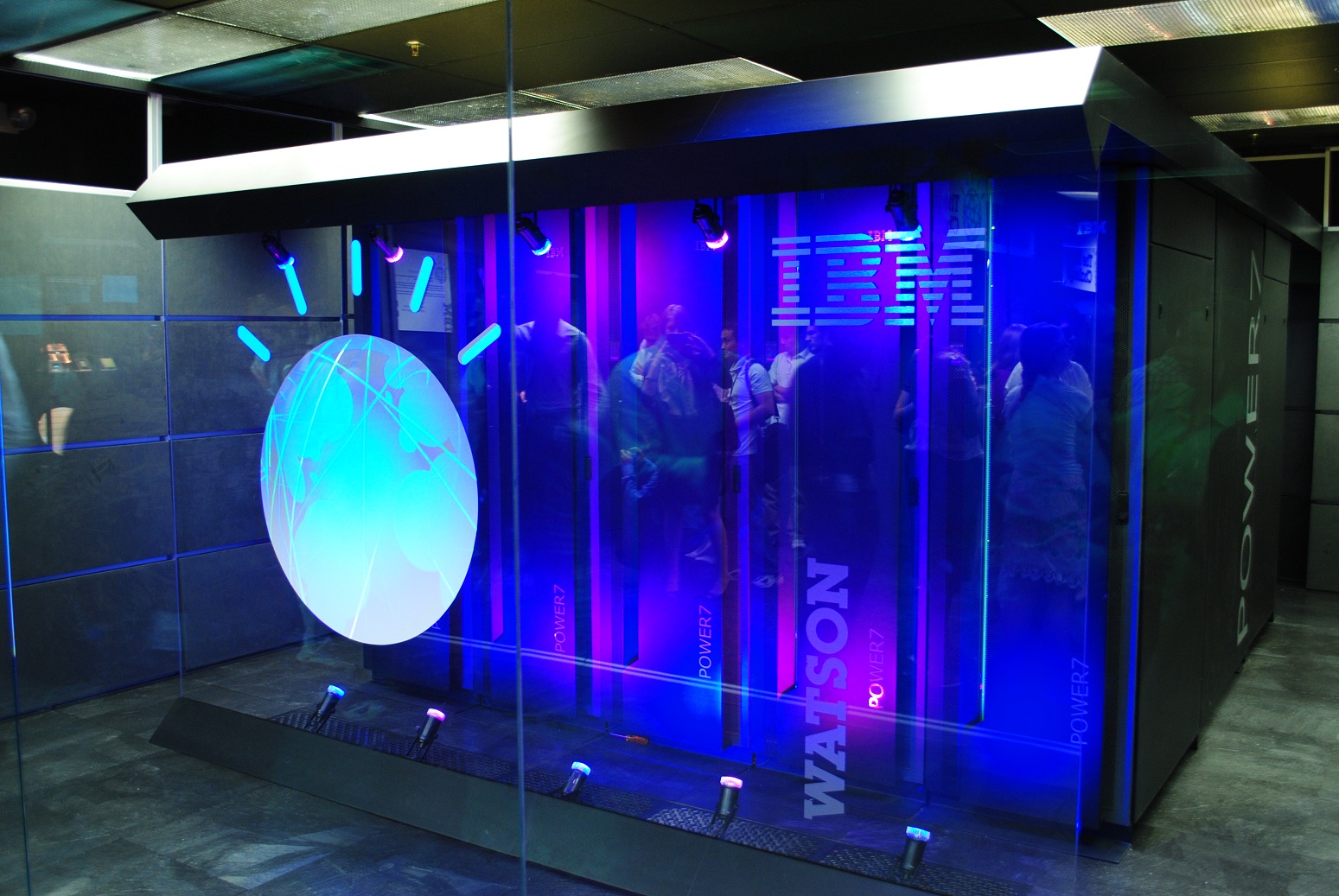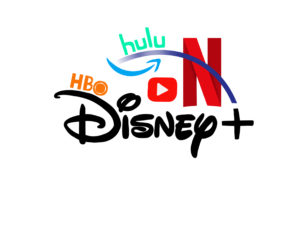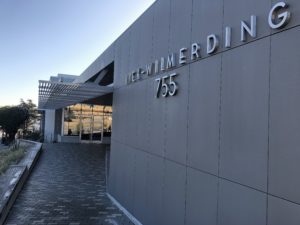The United States job market is constantly changing. According to the US Bureau of Labor Statistics, there were less 100,000 software engineering jobs in 1985. Now there are upwards of 1.2 million. The latest changes to the job sector are of extreme consequence to high schoolers: professions impacted by artificial intelligence.
Artificial intelligence was first imagined by science and speculative fiction authors in the 19th and 20th centuries. Artificial intelligence — AI — is now a real and advanced technology fit for an age of automation.
“Science fiction has been predicting AI for a long time,” says Andrew Kleindolph, Lick-Wilmerding’s Technical Arts Department Chair. ”What has allowed [artificial intelligence] to take off has been that our computing capabilities have become so powerful.”
AI works through the implementation of algorithms that attempt to mimic the decision making skills of a human brain. Machine learning, the foundation of AI, is the true difference between a normal program and a highly capable algorithm. Machine learning uses data from large sets to make educated predictions on the outcome of new situations presented to it.
“Before, people were held back by having to crunch so much data, but now with cloud computing, and people being able to use more machines…we are able to accomplish tasks much easier than before,” Kleindolph says.
“There are basically two kinds of problems where AI has been very successful. One is problems where ‘fuzzy’ answers are okay…Google translate, image search, and facial recognition are all in the category of things where it’s okay to be approximately right most of the time,” says Kenneth Duda, the Chief Technology Officer of Arista Networks. “The other category where AI has been crushing it is closed-system games, like Go, Chess and other very structured systems.”
AI can make accurate predictions, but only after having simulated the same situation to ‘teach’ itself how to behave. Therefore, situations that are extremely structured, like playing games and executing simple tasks are where AI thrives.
The implementation of AI has led many analysts, including those at the Davos World Economic Forum in 2019, to call AI part of the new technological revolution. Analysts compared AI to the industrial revolution in the 18th and 19th centuries which radically changed the job landscape.
In April 2018, a report by the consulting firm McKinsey and Company released predictions detailing the potential of automation for over 400 different professions. They found that over two-thirds of current job analysis could be improved by using AI over other analytical techniques.
Kleindolph believes that AI will take hold in the common workplace in the near future. “Humans actually have a pretty limited scope of what we can predict and learn in a [certain] amount of time, so now people are wondering: could a computer actually look at massive data sets, make predictions and see models that humans can’t?”
The applications of such a technology could be endless. With faster, more accurate predictive interfaces, people may be able to interact with their technology in new ways that once were only possible in science fiction. Map accuracy will increase, online retail will simplify and grow closer to shopping in person and manufacturing will be cheaper than ever before.
One of the most revolutionary possible applications of AI will be the ability to predict diseases and pathogens in humans based on symptoms only. “It would look at data and see that ‘these symptoms’ might mean that there’s a high percentage chance that this is cancer, or whatever it may be,” says Kleindolph.
“I think that we could create climate models and crunch new levels of data to create more accurate predictions than [humans alone] could ever make, like ‘this is what’s going to happen,’” said Kleindolph. Recently, Google and Harvard have worked to develop a system that predicts the aftershocks of earthquakes before they happen.
In 2017, NASA used a machine learning interface to track the path of Hurricane Harvey to the accuracy of a data point every hour rather than once every six hours, potentially saving countless lives.
“You could basically call artificial intelligence ‘applied statistics,” says Nameer Hirschkind ’19, now a student at the University of Michigan studying computer science. “Machine learning is being used now everywhere. Even just really simple apps on your phone likely have bits of AI embedded somewhere.”
Now on the brink of the age of artificial intelligence, many are worrying that one flaw may outweigh its immense number of applications: bias.
“All of these algorithms are created by humans and then the data sets are created by humans, so if we’re not careful about where the data sets come from, it’s very easy to feed flawed data sets into the system and then the system just reproduces the same mistakes,” Kleindolph said.
In addition to bias, Duda also worried that “gray-area problems” would be hard for artificial intelligence to adjust to. “You can’t make too many mistakes. If you’re driving a car, driving into a manhole or perceiving fog as a physical obstacle and slamming on the breaks, the stakes like that are a real problem.”
The job implications for a landscape that includes artificial intelligence are critical to consider, especially for current high school students, who were educated in a world without AI and will graduate college during the AI revolution.
“[A big fear] is that some are deciding that we need less humans to do certain things, and then at the same time we’re investing less in education, so then if someone doesn’t want to become a writer of algorithms then what’re we going to leave for them,” says Kleindolph.
According to the McKinsey and Company study, the jobs least likely to be automated are the ones that require a level of creativity that only humans can produce, like education, law, and engineering. Additionally, the jobs that require “human to human interaction,” according to both Kleindolph and Hirschkind, are unlikely to be automated, like doctors, police, and social workers. In the 21st Century, “the best thing to be is a creative, big-picture thinker, and flexible,” says Kleindolph.
“Every time there’s a transition like this, people always panic. ‘Oh my god, the machines are taking all of the jobs, there are going to be no more weavers and no more seastresses and no more cobblers,’ and guess what? That prediction was half true,” Duda said. “Once machines can do something really well, then people spend less of their energy doing it, but what isn’t true is that there won’t be any jobs for people.”
In every industrial revolution, there has been a combination of humans and machines working to increase productivity. In the Industrial Revolution, people started to use machines to make more goods at a faster pace. Now, people are able to increase their productivity in every facet of life through automation.
“We’ve never had a situation where we just couldn’t find something for everybody to do. Despite the increasing risk of automation and jobs like being a cashier or a line cook are ceasing to exist, new jobs are opening up at a faster rate than ever,” says Duda.
To prepare to enter the job market, Duda says high school students should discover what fascinates them and find a way to pursue the interest in a way that “someone will pay money for.” He encourages students to pursue interests in any area where “you are making important decisions,” employing critical thinking, and can’t simulate to get the answer.
“I see computers as becoming partners to people doing those things, not replacing them. If anything you’re doing is mundane and not requiring judgement, you are at risk for getting replaced by a computer. The interesting jobs will become more interesting as computers become partners.”
Similarly, Kleindolph shared some final advice to students. “The advantage of being young is that if you remain excited about learning and if you’re flexible, you’ll figure out what skills you need to survive,” he says. “As long as you want to work and contribute to society and find meaning, you will be okay.”







